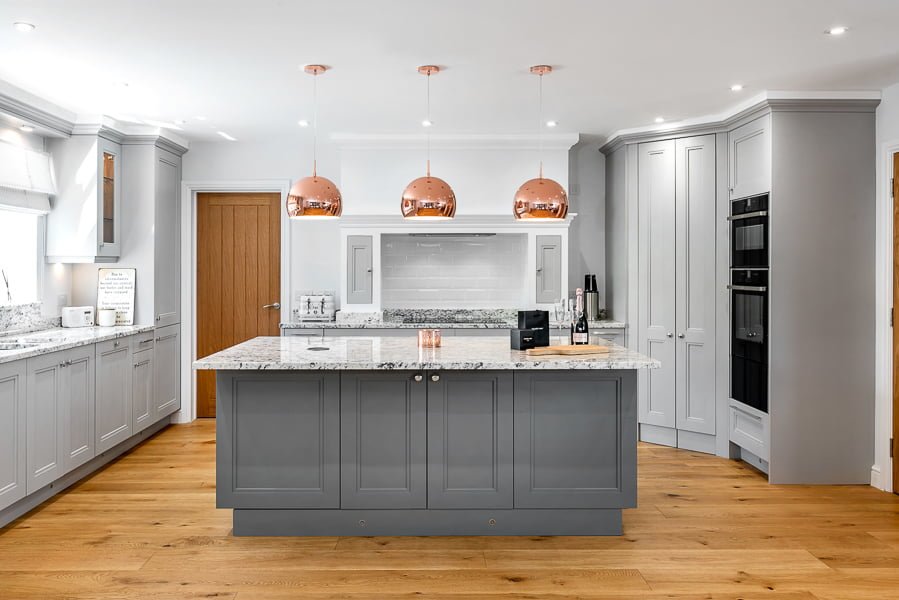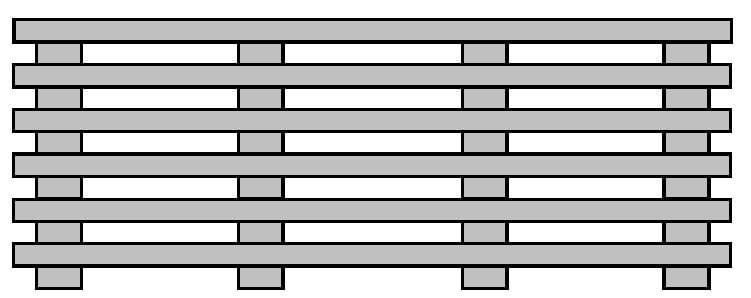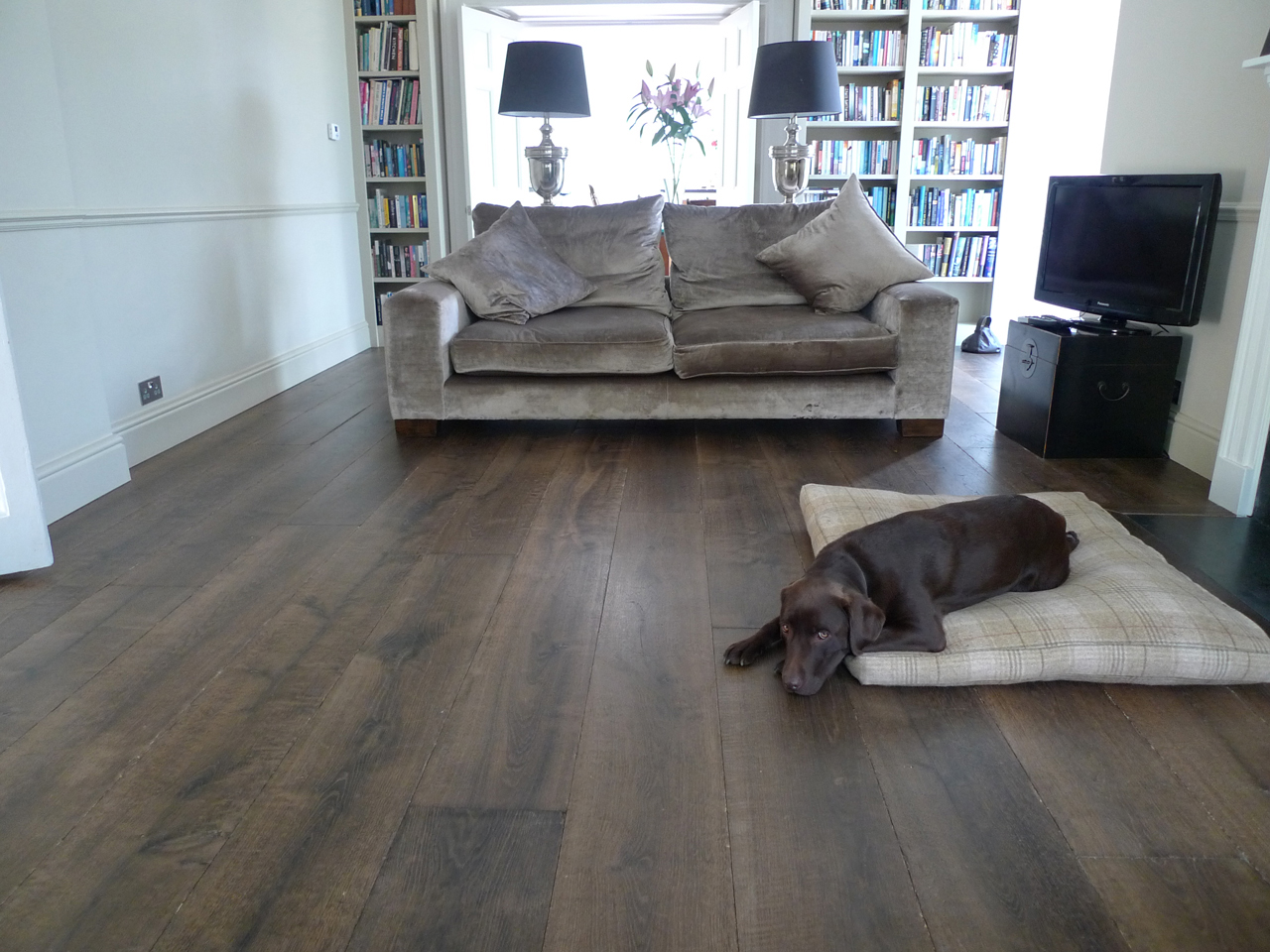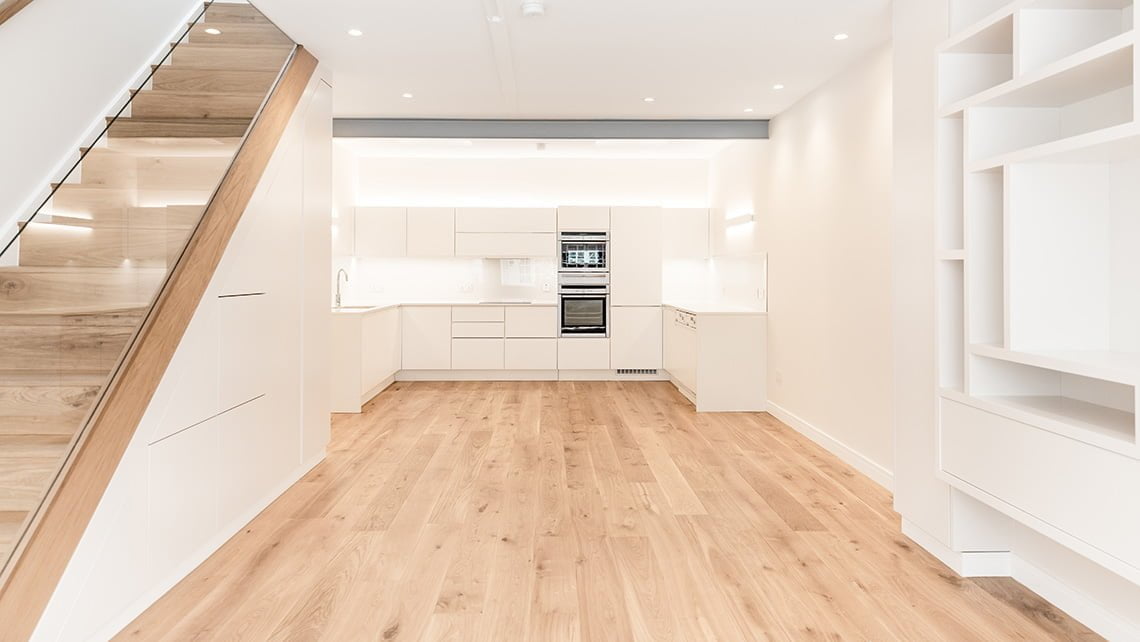Wood Flooring and Underfloor Heating

With its energy efficiency and the ability to save on precious floor space, it’s easy to see why underfloor heating is becoming an increasingly popular way to heat homes. Thankfully, there is no reason why an underfloor heating system should get between you and the wood flooring of your dreams. With the right kind of boards and a suitable fitting method, you can still have a beautiful timber floor to achieve your perfect interior aesthetic. There are, however, some essential considerations to bear in mind when it comes to laying wood flooring over underfloor heating.
So, which wood flooring should you choose? And how should you go about fitting it?
Choose An Engineered Board
Why is Engineered Wood Flooring the Best Option?
Engineered wood flooring will not only give you the warm appearance of natural timber but also allows underfloor heating systems to provide extra cosiness underfoot.
Engineered boards such as our Bristol Tectonic® planks are designed to be very stable and resist any significant expansion and contraction due to environmental changes. Therefore, we recommend our engineered flooring for bathrooms and kitchens, as well as for installation above underfloor heating.

Why Avoid Solid Wood Flooring When Fitting Over Underfloor Heating?
We strongly advise against installing solid planks over underfloor heating. Solid wood flooring is more susceptible to unwanted movement: they can warp, cup or buckle when there are any significant temperature changes.
Changes in moisture content due to the continually changing temperatures delivered by underfloor heating systems will make solid floorboards expand and contract at unacceptable levels. This movement puts stress on the flooring and damages it.
On top of this, wood is also a natural insulator and thick solid hardwood planks will stop heat transferring efficiently through the timber floor.
What Kind of Underfloor heating?
There are generally two types of underfloor heating systems: wet systems and electric systems. Wet underfloor heating systems work in a similar way to standard central heating, pumping warm water through underfloor pipes. Electric underfloor heating systems use electric coils laid underneath the floor as the source of heat.
Wet systems, where pipes are set within a concrete screed, are the most efficient and are easier to control.
Electric systems are easier to install and are ideal for installations where you’d like to avoid expensive subfloor work. They work independently from the existing central heating system. Although electric underfloor heating is more affordable to install, it tends to be more expensive to run.
Our engineered boards are compatible with both kinds of underfloor heating systems.

Temperature Control
Whichever system you have, you must be able to control it accurately; the system should allow you to keep the room at a consistent temperature.
You should always take care to change the temperature gradually, mainly when the floor has first been installed or after long periods of not using your underfloor heating system. Keep the heat as consistent as possible and avoid extremes temperatures—it shouldn’t go above 27°C. This temperature limit is an industry-wide recommendation; there is a possibility of wood flooring shrinking excessively when the floor surface gets too hot.
You should carry out any testing of the underfloor heating system (especially running the system at very high temperatures) before the wooden flooring is laid.
Once commissioned, it’s best practice to keep the underfloor heating on at a temperature it would normally be set at. Keep it consistently at that temperature for a couple of weeks prior to receiving the boards. We recommend for the property to have a temperature of 15-24°C, and relative humidity of 40-65% for 14 days before installing wood flooring.
Acclimatisation
Getting your floor used to its new surroundings is always important; acclimatisation is especially vital where underfloor heating is present.
When your wood flooring is delivered, it’s best to remove any wrapping and stack the boards on wooden battens to allow airflow around them. Although our engineered boards are extremely stable and cope very well with changes in relative humidity, we recommend a minimum of 72 hours of acclimatisation before fitting.

Around 48 hours before fitting, the underfloor heating system should be switched off. When fitting is completed you should turn it back on at a low temperature and increase the temperature gradually (e.g. 1°C per day) to avoid the boards shrinking too much too rapidly; heating it up too quickly can cause the top hardwood layer to develop surface splits.
Avoid Hot Spots
To avoid any problems, heat should be distributed across the floor as evenly as possible. It’s also worth bearing in mind that thick rugs and runners can trap heat, so you should use them carefully (who wants to hide their beautiful wood flooring under a rug anyway?).
How Should the Flooring be Fitted?
We always recommend using a professional floor fitting company, such as Chaunceys, to install your floor. Depending on the method of underfloor heating, they will recommend either secret nailing, gluing, or floating the boards.
Fixing on Concrete Screed
If a concrete screed has been used, gluing the boards using a flexible adhesive is usually the best method and ensures rapid, more efficient heat transfer. We highly recommend fully bonding to the sub floor. At Chaunceys, we recommend and supply Sikabond T2 wood flooring adhesive in cartridges.
The concrete subfloor should be completely dry. You should check the moisture content of the subfloor prior to installation and apply a suitable damp-proof membrane where necessary.
Fixing on Battens
If battens have been laid, you can can secret nail and/or glue the flooring to this. Take great care around any areas close to the pipes.
Your fitter may advise using Sikabond T2 glue to fix boards to any battens that are close to pipes. This will ensure that there is no damage to the pipes from nails.
Floating
Our Tectonic® oak flooring can be laid as a ‘floating floor’. This method involves gluing the Tongue and Groove joints together to form a floating layer over the solid subfloor. This may not the best choice for installing over underfloor heating because any air gaps left when installing floating boards will act as barrier to the heat transfer.
If your subfloor is perfectly flat, then floating may be a viable option using a specialist underlay which will aid the transfer of heat.
For more details on fitting methods, please see our underfloor heating fitting guide.
Why Choose Wood Flooring With Underfloor Heating?
Wood is naturally warmer underfoot than stone or tiles, and it conducts heat well compared to many other types of flooring. Wood also retains the heat nicely, which makes it the energy-efficient choice.
As a flooring material its thermal properties and inherent luxurious feel make wood flooring a perfect match for underfloor heating.

Wood flooring is sustainable and is readily available from eco-conscious suppliers. At Chaunceys, almost all our timber is purchased from FSC® (FSC-C131323) managed forests where new trees are planted to replace harvested ones.

